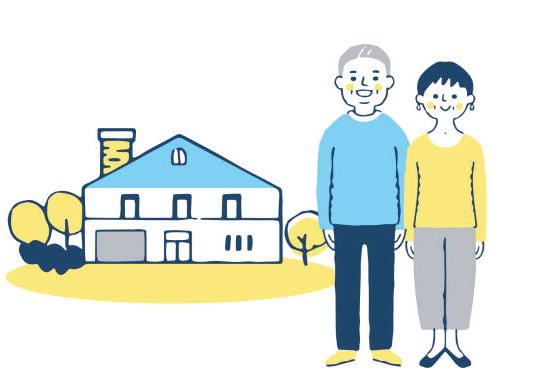
2 minute read
Home SAFE Home
Hazards In The Bathroom
Of all the household areas that we encounter during our daily routine, the bathroom is the area in which 80% of falls occur for the population of adults 65 years and older. Luckily, all dangerous aspects of the bathroom can be modi ed in a way which promotes independence, maximizes mobility, and reduces the risk of falling. Here we will highlight some of the hazards within the bathroom.
SLIPPERY SURFACES Bathrooms often have smooth tile surfaces and slick bathtub oors. Although they are easy to clean, they also are a frequent culprit of falls.
LOW TOILET SEATS Toilets are many times as low as 14-15 inches which is exceedingly di cult to stand up from when you have reduced leg strength.
DIMLY LIT ROOMS Many bathrooms do not have adequate lighting which is only reduced with the presence of steam from a hot shower.
LOW BLOOD PRESSURE Hot showers may feel great on a cold New England morning, but the negative e ects on blood pressure can cause dizziness and loss of balance.
Residents of Rhode Island work hard to live where we do.
The growing trend has been for people to remain in their homes as they age. The National Council on Aging reports that seventy-five percent of adults (60+) intend to live in their current home for the rest of their lives. There is no escaping the fact that we are all human and we age. As the years pass, things that were once taken for granted like getting up and down the stairs and getting around in the bathroom, become more challenging. For many, assisted living facilities ranging from three to five thousand dollars per month are simply unaffordable.
As the population shifts towards remaining at home, fall prevention must become a high priority, not only amongst healthcare professionals but also anyone with older loved ones living independently in the community. One in three older adults fall each year and seventy five percent of these falls occur at home. It is vital to understand the importance of how the person interacts with the environment, especially as their abilities decline.
Many older adults aren’t aware of how simple home modifications that can help their ability to stay in their home. Typical homes are “Peter Pan Houses,” meaning they are designed and constructed as if the occupants never change. Simple upgrades in these homes can match the individuals changing needs. Grab bars can be strategically placed in the bathroom to assist with bathing and toileting. Stair lifts or handrails can assist with climbing and descending the stairs.
■ HOME SAFE HOME
– continued next page
NO PLACE TO REST Many showers and bathrooms have no place to take a seat and rest at the vanity or in the shower. This can cause fatigue which leads to falls.
REACHING OVERHEAD Placing your arms overhead to wash your hair, adjust the shower head, or reach for high shelving can create losses of balance leading to falls.
GLASS SHOWER DOORS While they can be attractive, sliding or swinging glass shower doors are one of the most dangerous household items. We at Oakley Home Access are anti-glass doors. They reduce access for entering/ exiting a shower, and allow less space for caregivers to assist their loved ones. Also, shower doors have handles that o er a false sense of security: They are tempting to utilize for stabilization during entering/exiting the tub or shower, which commonly leads to falls. Finally, glass can be very dangerous because some doors can break if we lean or fall into them.
SUCTION CUP GRAB BARS While readily available and inexpensive, suction cup grab bars are a dangerous misconception. These bars often come loose during hot showers and o er no support in a falling situation. They literally indicate on them to not utilize for weight bearing. Grab bars should be securely anchored with specialized hardware as well placed properly.









